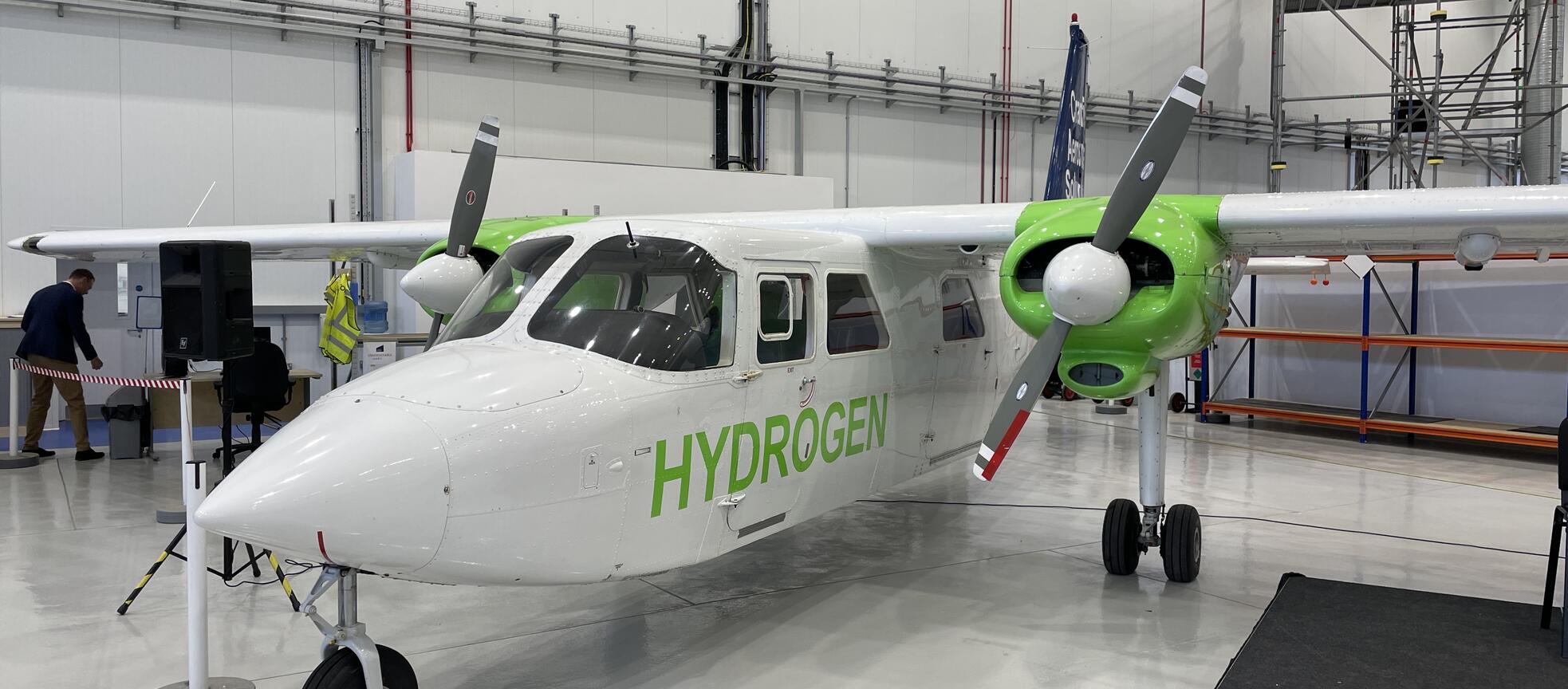Click Here to View This Page on Production Frontend
Click Here to Export Node Content
Click Here to View Printer-Friendly Version (Raw Backend)
Note: front-end display has links to styled print versions.
Content Node ID: 420950
Cranfield Aerospace Solutions has integrated its hydrogen fuel cell powertrain into the nacelle of a testbed aircraft as it prepares to ground-test the technology it aims to use to produce hydrogen-powered regional airliners. The UK company said the integration of the 240-kilowatt propulsion system is the first step in preparing for ground tests that could lead to flight tests with a technology demonstrator by the end of 2024.
Announcing the integration of the hydrogen fuel cells and electric motors on March 7, Cranfield Aerospace said performing the integration on a testbed has meant that it will not have to complete a fundamental redesign for the production aircraft. The company has been working with Britten-Norman on plans to convert its nine-passenger Islander aircraft and last year showed an example of the twin turboprop in its new engineering hangar at Cranfield in southern England.
Last month, UK-based Britten-Norman confirmed that it is seeking new investors to secure the future of the company, which last year relocated manufacturing to its facility on the Isle of Wight. It had planned to merge with Cranfield Aerospace, but the companies subsequently decided to work under a less formal partnership.
“There are various outcomes and we’re in close contact with Britten-Norman,” a Cranfield Aerospace spokeswoman told AIN in a written statement. “Whatever the outcome, we anticipate working very closely with the company in its revised structure.”
The forward section of the undisclosed aircraft’s nacelles houses the hydrogen fuel cell system, as well as an electric motor, inverters and controllers, a pitch control unit, and electric cabling, routing, and cooling systems. The rear section of the nacelle contains the ground power interface and the high-voltage power distribution system.
According to the company, by packaging the entire full power system into the nacelle, its engineering team has identified and solved all the key technical and packaging challenges of designing a safe and efficient hydrogen powertrain. “This milestone is crucial as it lays the groundwork for engaging with regulators about certifying the technology for safe flight, a pivotal step toward realizing the vision of commercially viable zero-emissions aviation,” the company said in a press release.
“The decision was taken early on in the program that before proceeding to ground and flight tests, we had to ensure we had solved the packaging and thermal management challenges that underpin the commercial viability of the technology,” commented Cranfield Aerospace’s chief strategy officer, Jenny Kavanagh. “Now that this significant milestone has been achieved, [the company] is progressing to the next stage of the project and to launching manufacture for the testing campaign.”
